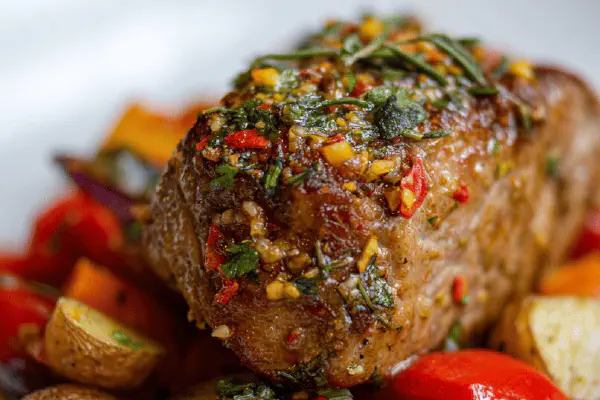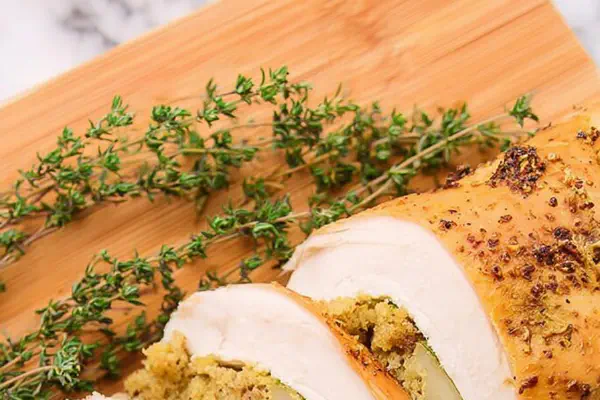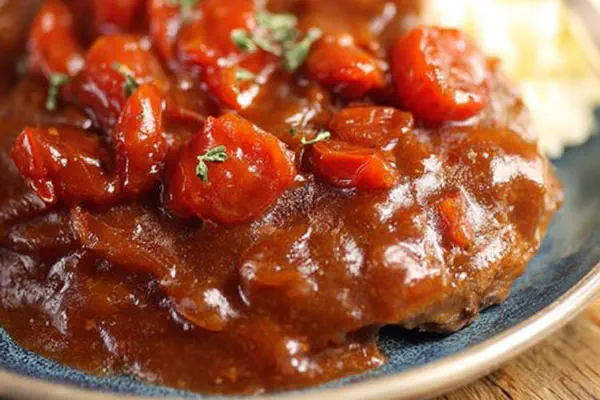Featured Recipe
Greek-Style Veal Roast

By Kate
"
Veal shoulder roast braised low and slow with caramelized onions, garlic, sun-dried tomatoes, and green olives. Slow reduction of red wine and herbs for a thick sauce. Wrapped airtight in foil to lock moisture, resulting in fork-tender meat. Adapted to avoid common dryness pitfalls and bring subtle acidity. Serves 8 with potatoes or seasonal vegetables.
"
Prep:
25 min
Cook:
Total:
Serves:
8 servings
veal
braising
Mediterranean
roast
main course
Introduction
Veal shoulder—tough but fatty, a diamond if you know how to tame it. Low-temp braising keeps it moist; no dry steak-like disappointment here. Using green olives shifts flavor balance, less briny punch than kalamata but equally complex. Sun-dried tomatoes instead of canned diced add concentrated umami—don’t skip this step. Red wine provides acidity to break down connective tissues, but must reduce properly or end sour. Wrapping tightly in foil stops moisture from escaping in the hot oven — don’t wing this part or meat turns leathery. Slow roast until you poke through resistance, not before. The aroma of garlic mingling with caramelized shallots and thyme will fill your kitchen well before the bell rings. No fuss, all technique. Timing is flexible; watch texture, not clock.
Ingredients
About the ingredients
Veal shoulder often varies in size and quality; trim excess sinew if tough but keep some fat for flavor and moisture. Olive substitution: green Castelvetrano olives deliver buttery, mild heat unlike Kalamata’s sharper bite; if you prefer the latter, rinse sparingly to lessen salty kick. Sun-dried tomatoes rehydrate slightly in warm water or oil if too dry; avoid canned diced tomatoes here to prevent watery sauce. Shallots bring sweetness with subtle sharpness; use onions only if desperate. Red wine needs to be dry—avoid fruit bombs that can make sauce overly sweet; use a cheap but decent bottle. Olive oil for fat layer and searing; toasted sesame oil won’t do. Make sure garlic is fresh—powder burns too fast. Salt late; olives contribute saltiness. Foil quality matters; double if unsure to avoid leaks.
Method
Technique Tips
Searing is critical: Maillard reaction creates flavor and a textured crust that meat breaks down during braise. Use heavy skillet; do not overcrowd when browning. Use moderate oil; you can always add more for shallots. Shallow pan keeps sauce thickening fast. Wine reduction cues: Flames low, bubbles medium-sized, volume visibly cut at least in half, coats pan bottom thickly. Remove fresh herbs before cooking prevents bitter herbal notes. Seal pouch tightly—test with wet finger, steam should not escape even under pressure. Oven temp lower than usual to avoid toughening proteins; aim for true slow braise. Rest meat in pouch to retain juices instead of opening immediately. Shred rather than slice if meat resists clean cuts. Serve with potato starches that absorb sauce or roasted root vegetables for balance. Always have extra foil ready—if pouch leaks, juices burn and ruin roast integrity.
Chef's Notes
- 💡 Sear the veal for a good crust. Don't rush it. Let it sizzle. Deep golden brown. Changes sound when it's right. Add salt and pepper but don't overdo. No watery meat.
- 💡 If using different olives, know the taste shifts. Kalamata are briny, Castelvetrano are buttery. Choose based on preference. Rinse less for less salt; add oil for richness.
- 💡 Thyme adds depth; remove after cooking. Don't forget to taste the sauce before serving. Adjust seasoning after adding olives. Balance flavors. Olive oil quality matters.
- 💡 Sauce should coat the spoon. If too thin, simmer longer. If meat's tough, check temp next time. Aim for fork-tenderness; resistance means more time. Trust feel.
- 💡 Foil matters, too. Wrap tightly. Steam escapes mean dry meat. Double-check seals. Pouch leaks ruin roast. Place in shallow pan for better sauce control. Keep heat low.
Kitchen Wisdom
How to know when it's done?
Fork-tender means ready. Use instant-read thermometer. 82 °C is best; not every time has to be exact. Juicy is key.
What if the roast is dry?
Next time, check foil seals. Wrap well. Monitor temperature closely. Too high, too long will toughen. Moisture is crucial.
Can I substitute ingredients?
Yes, but flavors shift. Use any good red wine. Olive types change taste. Fresh herbs bring more than dried. Adjust as needed.
Storage options for leftovers?
Refrigerate up to three days. Freeze portions if need longer. Reheat gently to avoid dryness. Sauce helps keep moisture.



